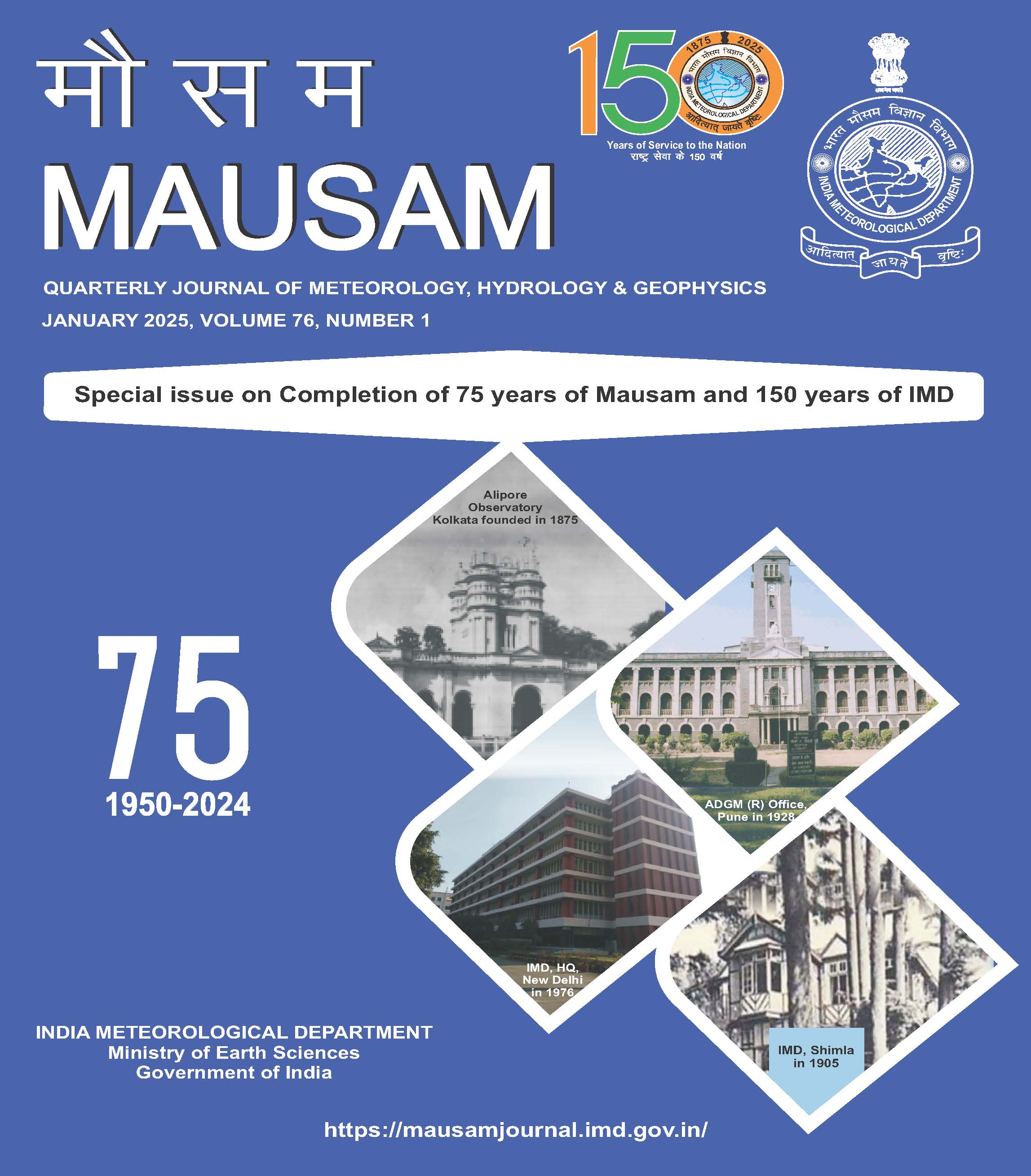Evolution of Radar Meteorology in India and the latest trends
DOI:
https://doi.org/10.54302/mausam.v76i1.6497Abstract
Weather radar is an indispensable tool in the continuous monitoring and warning of extreme events including tropical cyclones and thunderstorms. The India Meteorological Department (IMD) has been operating radars since 1949. The evolution of radar meteorology in India may be divided into three broad phases, namely, the 1950s (phase-I), then up to the year 2000 (phase-II), and thereafter (phase-III). During phase-I, radars were imported and installed in cities to aid aircraft operations. Photographs of radar scopes were analysed to provide a broad understanding of temporal evolution and spatial extent of precipitating clouds in different parts of the country and seasons. During phase-II, storm warning (X-band) and cyclone warning (S-band) radars with more power and range were installed, and some of them were indigenous. Phase-III ushered in the era of digital Doppler weather radars in India. Interfacing between numerical models and radars started in phase-III including assimilation of radar winds and model verification. Installation and operation of weather radars outside IMD also started in phase-III. Important areas where more work needs to be done include a well-trained workforce in radar meteorology, radar calibration and data standardization, radar area coverage and networking, algorithms for quantitative precipitation estimation using polarimetric products, assimilation of radar products in numerical models, research on cloud physics and dynamics, applications of AI/ML in storm and severe weather nowcasting.
Downloads
Published
How to Cite
Issue
Section
License
Copyright (c) 2025 MAUSAM

This work is licensed under a Creative Commons Attribution-NonCommercial 4.0 International License.
All articles published by MAUSAM are licensed under the Creative Commons Attribution 4.0 International License. This permits anyone.
Anyone is free:
- To Share - to copy, distribute and transmit the work
- To Remix - to adapt the work.
Under the following conditions:
- Share - copy and redistribute the material in any medium or format
- Adapt - remix, transform, and build upon the material for any purpose, even
commercially.



